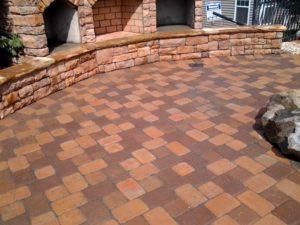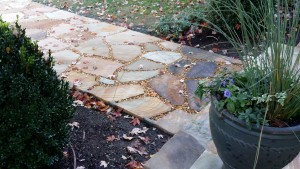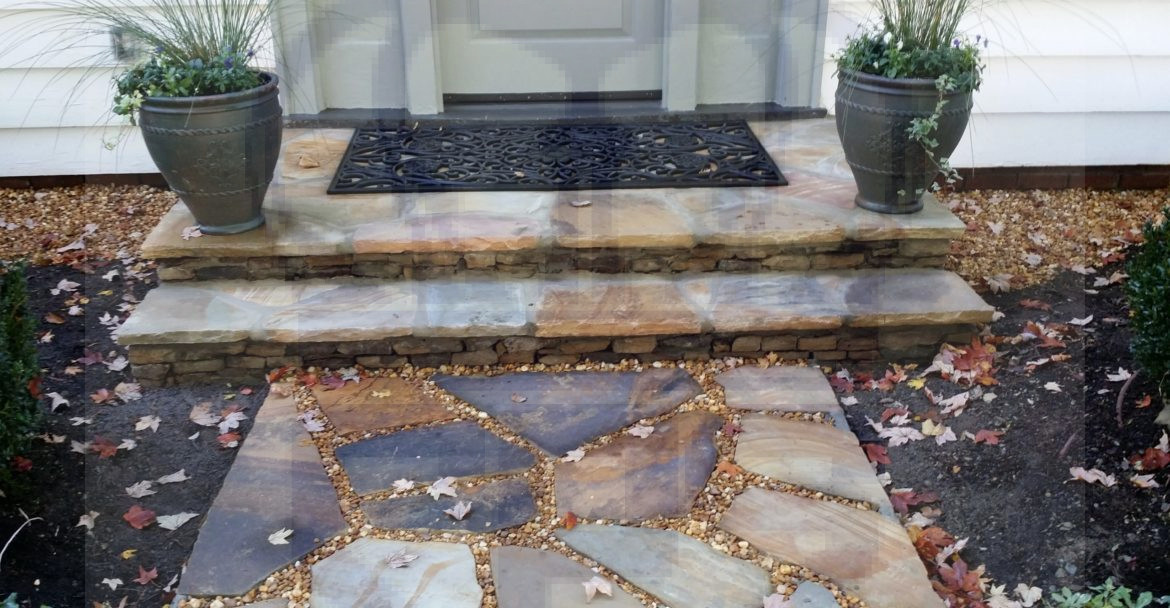Choosing the right stone paver could be the single most important decision in building your outdoor living space. Like landscaping and flowering plants, stone pavers add color, texture, and pattern to your space. Unlike plants, which grow and bloom only part of the year, stone pavers add character, color and texture throughout the year.

The most widely available paving materials fall into two broad categories: composite materials like brick and concrete pavers & quarried stone like granite & slate.
The great range of stone pavers makes shopping and designing fun, but the number of choices can also be a bit overwhelming. Each one has its advantages and disadvantages, and some are better suited than others to particular uses and locations. By understanding and exploring your options, you’ll be able to make the right choice for your setting and budget.
Stone is the most durable and versatile. Stone allows for a large range of colors, shapes, and sizes. From flagstones paths to stone paver patios, there is a stone for every outdoor space. All of this, however, comes at a price. The downside of stone is the price to purchase and install and availability depending on your region  and distance from the source.
and distance from the source.
Please keep in mind when purchasing stone for paving that the thickness be at least 2 inches, which is best for supporting frequent foot traffic and enduring the vagaries of settling or weather.
Another tip, always check the color of the stone when wet. That pretty honey-tan granite you like so much could turn a lurid golden orange in the rain.
Sandstone is an excellent all-around choice
One of the most popular paver stone options is sandstone. It’s easier to cut and work than granite, which helps account for its lower cost.  Blue-gray and lilac-gray are common sandstone colors, but light gray, tan, soft golden cream, and orange-brown can be found as well. Expect some color variation in every lot of sandstone.
Blue-gray and lilac-gray are common sandstone colors, but light gray, tan, soft golden cream, and orange-brown can be found as well. Expect some color variation in every lot of sandstone.
Gravel is a Great for a Small Budget
Gravel is easy to install and provides attractive texture for informal landscapes, short-term paving solutions, and gardens built on limited budgets. Weeds can become a problem if gravel is left untended, so it’s best to stay on top of them. To avoid issues with footing, select gravel that is labeled “1/4 inch minus” and avoid tumbled pea gravel. It also helps to tamp or compact the gravel, which should be done after a 2- to 3-inch-deep layer is put down.
Slate stands out for its texture and color
Often used as a flagstone, slate has a unique soft texture and subtle color palette that visually draws people in like a magnet. Its pastel blue-grays to muted reds and lavenders are beautiful, both to look at and to walk on. The same quality that makes slate easy to shape into relatively flat pieces can also limit this stone’s durability as an outdoor paving material. In areas that experience heavy rainfall or freezes, slate will often flake and chip. Slate holds up best in regions with limited rainfall and mild climates.
Granite can’t be beat for strength and durability
Granite is the best for durability. It is elegant and wonderful for formal outdoor spaces. Granite offers what may be the widest choices of color and one of the pricier options. Because of the price, granite tends to be used for accents and edge pieces.

